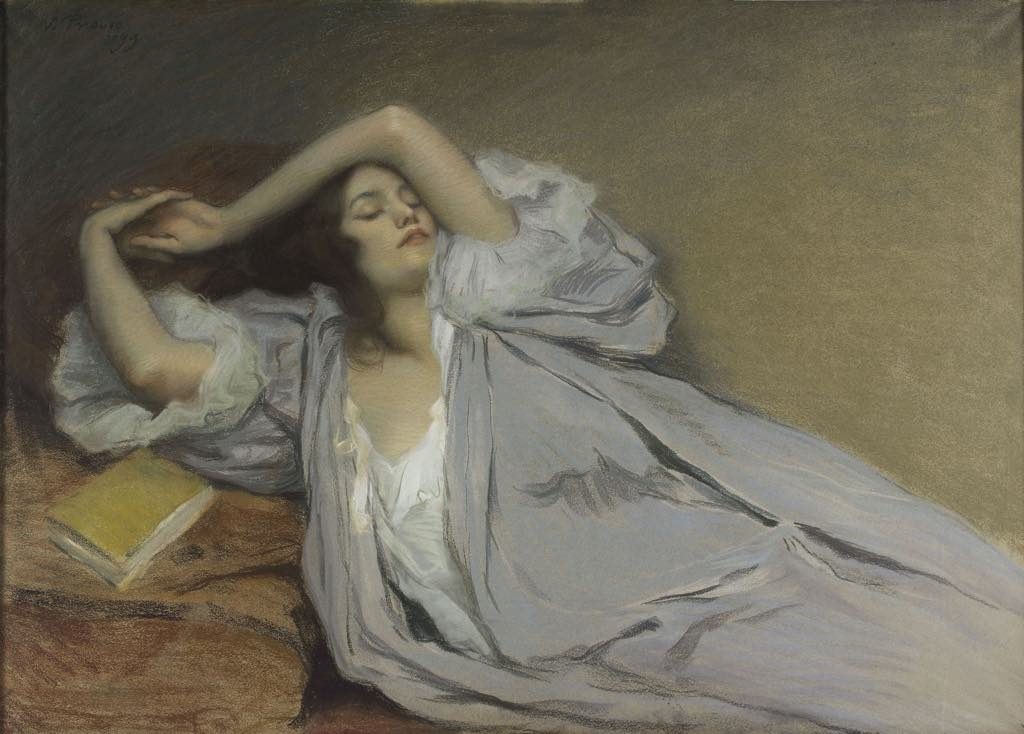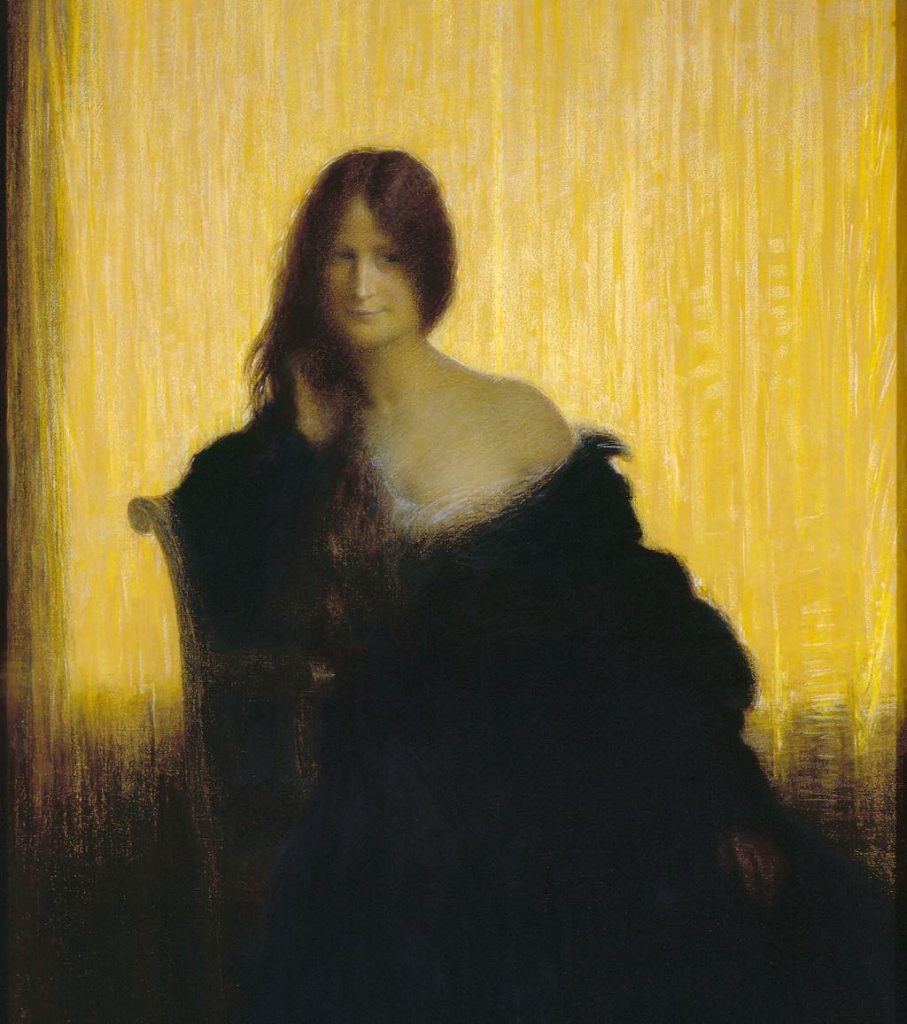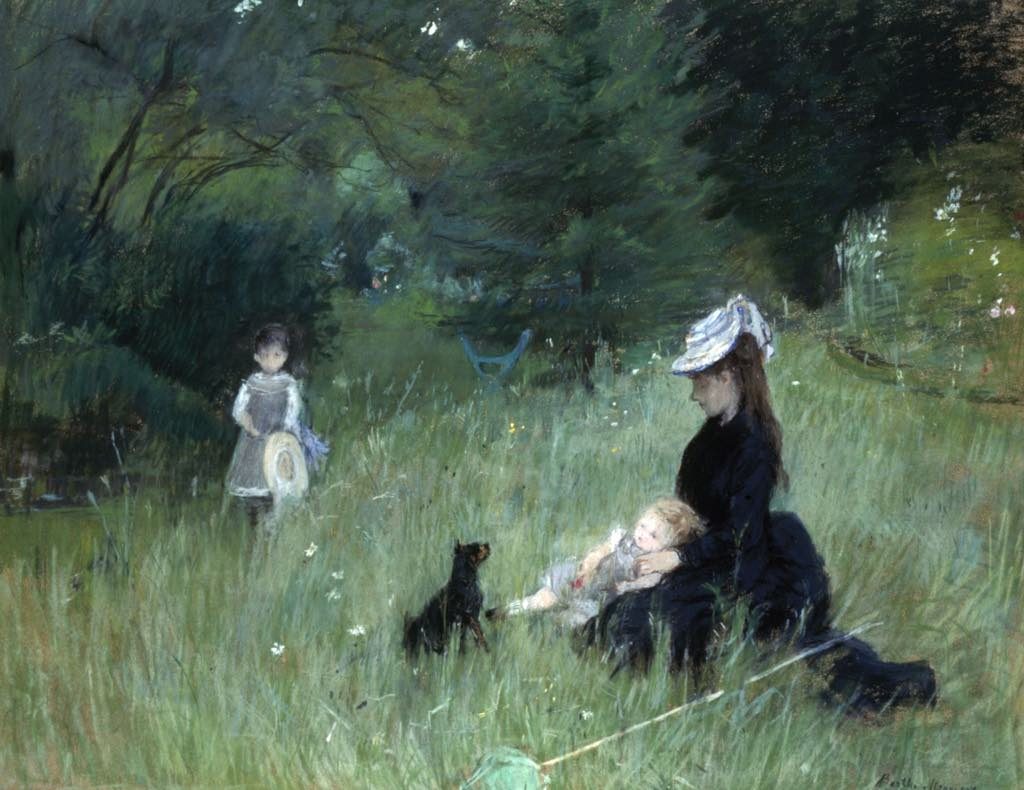
The exhibition “The Art of the Pastel: From Degas to Redon“ (through April at the Petit Palais) is an image booster for a medium often seen as a poor cousin of painting, something artists use when they can’t paint for some reason, a stopgap between drawing and painting.
By presenting a wide variety of pastels in every conceivable style, the show puts paid to all those preconceptions about the little sticks made of powdered pigments held together with a binder. The fact remains, however, that for various reasons they are difficult to work with and to conserve, which is probably the real explanation for their relative rarity.
Pastels made their first appearance during the Renaissance but experienced their first golden age in the 18th century, when they were popular for portrait painting. Another heyday arrived in the second half of the 19th century, when societies for pastel artists sprang up and such illustrious artists as Edouard Manet and Edgar Degas began to use them extensively.
The show at the Petit Palais concentrates on the rarely seen pastels in its own collection, mostly dating from the second half of the 19th century. Of the 130 pieces on show, many have never been exhibited before.

Pastels were often used for preparatory sketches for larger works. Elisabeth Vigée-Lebrun, the renowned portraitist of royals and aristocrats, used them throughout her career for this purpose, and we have one lovely and accomplished example here in “La Princesse Radziwill” (1801).

Other striking portraits are Victor Prouvé’s sensuous depiction of a woman in a luxuriously billowing dressing gown stretched out on a sofa (pictured at the top of this page), and “Sur Champ d’Or” (1897), by Charles-Lucien Léandre, a real master of the pastel represented by a number of beautiful works in this show.
It can be surprising to see how like oil paintings pastels can be when such an effect is desired. Examples here include John-Léon Riesener’s “Portrait de Mademoiselle Ehrler” (1861), in which a little girl, posing in a forest glade with a hoop and stick, wears a sumptuous (and sumptuously painted) pink satin gown with plenty of frills and flounces.

Pastels held special appeal for the Impressionists and other artists who worked en plein air because they were easier to transport. Berthe Morisot’s “Dans le Parc” (c. 1874) is one example, but there are also works here by Mary Cassatt, Auguste Renoir and, of course, that sometimes Impressionist, Degas. The Symbolists, represented by a number of works by Odilon Redon and others, were also pastel fans.
The names of many of the artists included in the show may be less familiar, among them painter and sculptor Albert Bartholomé, represented by a portrait of a female beggar, “Tête de Mendiante” (1882) that is moving in its simplicity.
Landscapes have not been left out, and pastels, with their intense light and color, seem especially well-adapted to depicting night scenes (Alexandre Nozal’s “Nocturne. Le Lac Léman – Souvenir de Villeneuve,” 1895) and snow scenes (the same artist’s “L’Embâcle de la Seine entire Asnières et Courbevoie,” 1891).
Colors referred to as pastels are pale versions of pure color, but there is nothing pale about the works in this exhibition, which covers an astonishing spectrum of styles and effects, making me wonder how pastels are used in modern and contemporary art (only one contemporary artist, Irving Petlin, is included in the show). A subject for another exhibition?
Favorite
I can’t wait to see this exhibit, thank you for the informative review.
Lovely review. Looks like a great show. The owner-before-last of Sennelier – the tiny Left Bank art supply shop across from the Louvre, told me his grandfather sold art materials to Picasso. One day Picasso came in to complain about the difficulty of preserving works in pastel, and urged Sennelier to help. And so the OIL pastel was invented. It’s still sold at Sennelier, and at most art supply stories world wide.
Susan Stamberg
Thank you for a wonderful review – I’m intrigued and on my way to see it today!
Thank you!